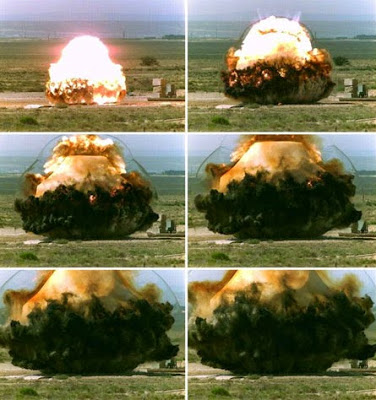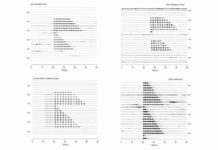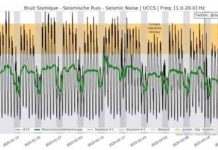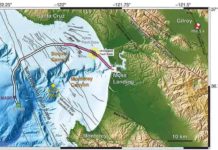
Lawrence Livermore researchers have determined that a tunnel bomb explosion by Syrian rebels was less than 60 tons as claimed by sources.
Using seismic stations in Turkey, Livermore scientists Michael Pasyanos and Sean Ford created a method to determine source characteristics of near earth surface explosions. They found the above-ground tunnel bomb blast under the Wadi al-Deif Army Base near Aleppo last spring was likely not as large as originally estimated and was closer to 40 tons.
Seismology has long been used to determine the source characteristics of underground explosions, such as yield and depth, and plays a prominent role in nuclear explosion monitoring. But now some of the same techniques have been modified to determine the strength and source of near and above-ground blasts.
The new method to track above-ground explosions serves as a forensic tool for investigators and governmental agencies seeking to understand the precise cause of an explosion.
“The technique accounts for the reduction in amplitudes as the explosion depth approaches the free surface and less energy is coupled into the ground,” said Michael Pasyanos, an LLNL geophysicist and lead author of a paper appearing in an upcoming issue of Geophysical Research Letters.
The team, also made up LLNL scientist Sean Ford, used the method on a series of shallow explosions in New Mexico where the yields and depths were known.
Pasyanos and Ford’s examination of source characteristics of near-surface explosions is an extension of the regional amplitude envelope method. This technique was developed and applied to North Korean nuclear explosions, then applied to chemical explosions and nuclear tests in Nevada.
“The technique takes an earthquake or explosion source model and corrects for the wave propagation to generate predicted waveform envelopes at any particular frequency band,” Pasyanos said.
Methods for determining the yields of contained events range from teleseismic amplitudes and P-wave spectra to regional P-wave amplitudes and magnitudes. Pasyanos developed a method to characterize underground explosions based on regional amplitude envelopes across a broad range of frequencies. One advantage of the method is that examining the signal over a wide frequency band can reduce some of the strong tradeoffs between yield and depth, Pasyanos said
“By allowing the methodology to consider shallow, uncontained events just below, at, or even above the Earth’s surface, we make the method relevant to new classes of events including mining events, military explosions, industrial accidents, plane crashes or potential terrorist attacks.” Pasyanos said. “A yield estimate is often very important to investigators and governmental agencies seeking to understand the precise cause of an explosion.”
For the Syrian explosion, the team did not have local seismic data from Syria, but it was well recorded by regional stations from the Continental Dynamics: Central Anatolian Tectonics (CD-CAT) deployment in Turkey.
If the explosion occurred well above the surface, a yield of 100 tons TNT equivalent would be required to produce the observed seismic signal.
“Given the video footage of the explosion, however, we know that it was neither at nor above the free surface, nor fully coupled,” Ford said. “We estimate a chemical yield ranging from 6 and 50 tons depending on the depth, with the best estimate between 20-40 tons. Including independent information on the depth, we could narrow this considerably. If, for instance, we definitively knew that the explosion occurred at 2 meters below the surface, then we would estimate the yield at 40 tons.”
The team found that though there are expected tradeoffs between yield and depth/height, when constrained by other information, the yields are consistent with ground truth yields in tests in New Mexico and reasonable values from what Pasyanos and Ford know about in Syria.
Note : The above story is based on materials provided by Lawrence Livermore National Laboratory.










